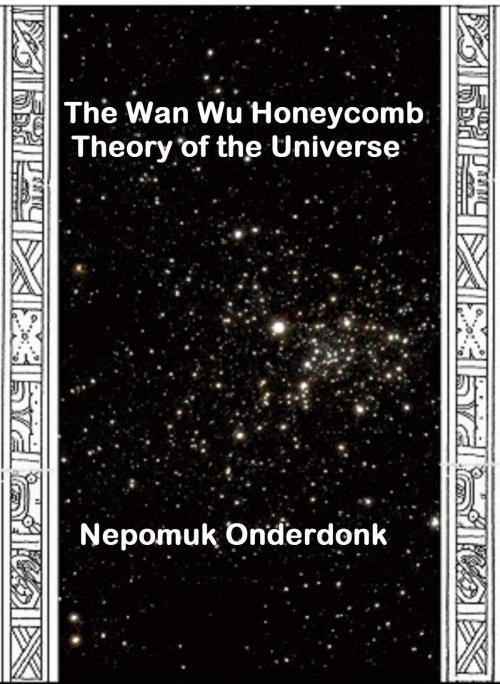The Wan Wu Honeycomb Theory of the Universe
Nonfiction, Reference & Language, Language Arts, Writing & Publishing, Authorship, Science & Nature, Science| Author: | Nepomuk Onderdonk | ISBN: | 9781311568533 |
| Publisher: | Nepomuk Onderdonk | Publication: | November 1, 2013 |
| Imprint: | Smashwords Edition | Language: | English |
| Author: | Nepomuk Onderdonk |
| ISBN: | 9781311568533 |
| Publisher: | Nepomuk Onderdonk |
| Publication: | November 1, 2013 |
| Imprint: | Smashwords Edition |
| Language: | English |
An armchair cosmologist through the three decades of the golden age of astrophysics, I developed my own model little by little, but also with a lot of help from the alternative ideas brought to light by other writers, some of the deeper and harder to sift through writers who nevertheless offer amazingly imaginative visions that are not limited by the accepted theories of modern day science, if they can posit plausible alternatives.
In Hegel's Philosophy of Nature, he said we look into the nature of the physical world around us to examine the nature of god, to better understand the mysteries manifest all around us, to show us more about the mystery that we are made up of; so it's irresistible to look at the pioneering and penetrating visions of the universe from today's space telescopes, and to wonder for the first time in the history of humanity about the sky in ways never imagined.
I think when we study the grand visions of cosmologists on what the universe is, how it's made, where it's going, it isn't necessarily about reality; of course it makes efforts to map back to reality, but we are as much studying humanity's imagination as we are the relation of the components of the universe. It's not necessarily a study of the universe as much as it is a study of visions of the universe in mankind, and the changes possible to these visions based on the unprecedented science of today.
But one other reason I think the study of the object called the universe is important, though it is admittedly a very different size species of organism than our peers, is the holographic idea that we are all microcosms of the macrocosm; the study of flow has made it clear that there are principles that span space and time in this universe, and from the star to the stellar mass black hole to the super massive black hole and the quasar core of the HLIRG's (hyper luminous infrared galaxies), and right back down to human beings, there is a nature to the flow through time, a presence of grace in that flow, and an all-permeating mystery. The more clues we can get, at any scale, allow us to better model and predict all the other scales, to light up aspects of thick dark reality that were hidden from all the shamans and sorcerers of the past millennia.
An armchair cosmologist through the three decades of the golden age of astrophysics, I developed my own model little by little, but also with a lot of help from the alternative ideas brought to light by other writers, some of the deeper and harder to sift through writers who nevertheless offer amazingly imaginative visions that are not limited by the accepted theories of modern day science, if they can posit plausible alternatives.
In Hegel's Philosophy of Nature, he said we look into the nature of the physical world around us to examine the nature of god, to better understand the mysteries manifest all around us, to show us more about the mystery that we are made up of; so it's irresistible to look at the pioneering and penetrating visions of the universe from today's space telescopes, and to wonder for the first time in the history of humanity about the sky in ways never imagined.
I think when we study the grand visions of cosmologists on what the universe is, how it's made, where it's going, it isn't necessarily about reality; of course it makes efforts to map back to reality, but we are as much studying humanity's imagination as we are the relation of the components of the universe. It's not necessarily a study of the universe as much as it is a study of visions of the universe in mankind, and the changes possible to these visions based on the unprecedented science of today.
But one other reason I think the study of the object called the universe is important, though it is admittedly a very different size species of organism than our peers, is the holographic idea that we are all microcosms of the macrocosm; the study of flow has made it clear that there are principles that span space and time in this universe, and from the star to the stellar mass black hole to the super massive black hole and the quasar core of the HLIRG's (hyper luminous infrared galaxies), and right back down to human beings, there is a nature to the flow through time, a presence of grace in that flow, and an all-permeating mystery. The more clues we can get, at any scale, allow us to better model and predict all the other scales, to light up aspects of thick dark reality that were hidden from all the shamans and sorcerers of the past millennia.















